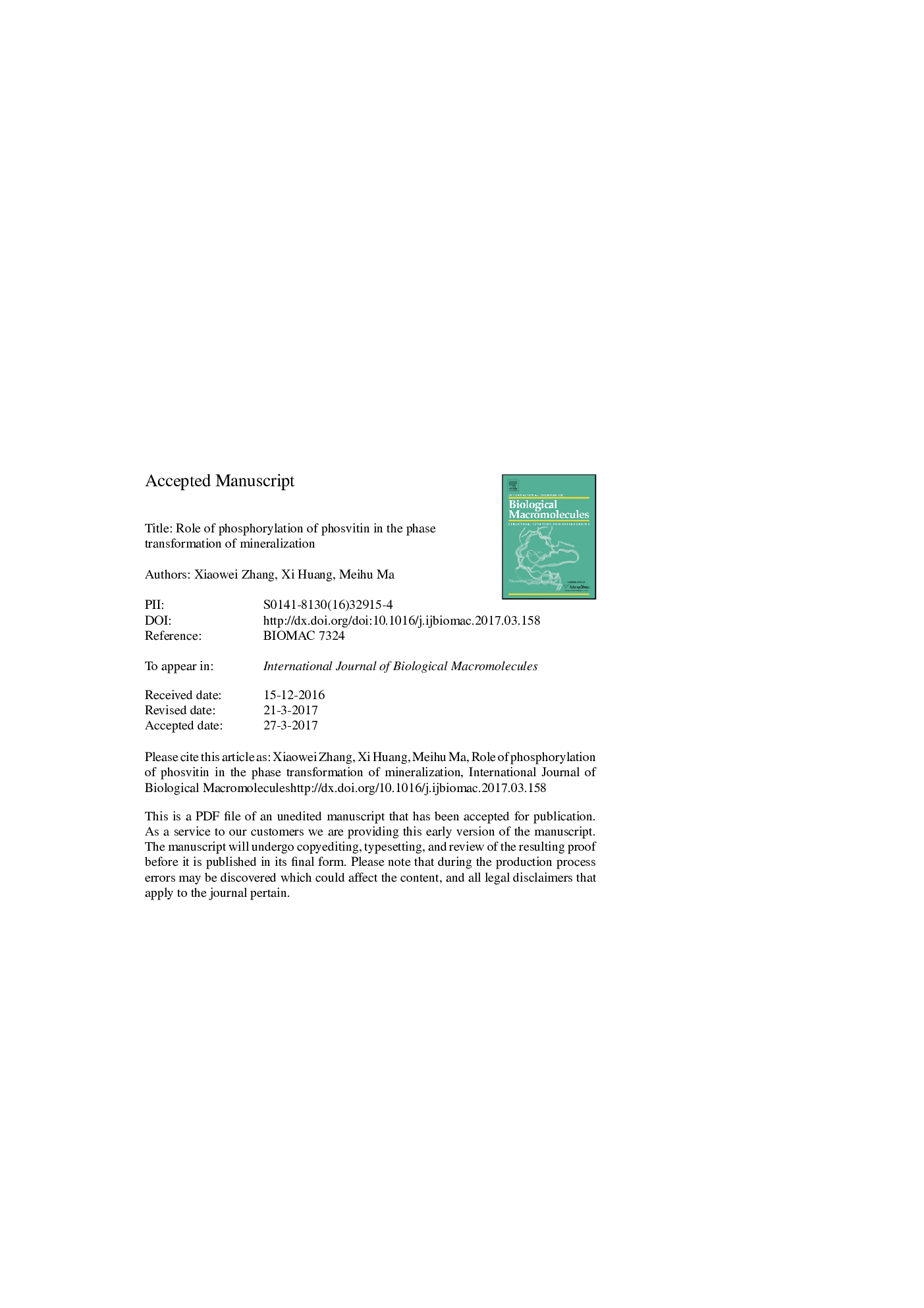| Article ID | Journal | Published Year | Pages | File Type |
|---|---|---|---|---|
| 5512002 | International Journal of Biological Macromolecules | 2017 | 30 Pages |
Abstract
Phosvitin is a unique highly phosphorylated protein that plays a role in the regulation of mineralization. This study investigated the role of phosphorylation of phosvitin in the phase transformation of calcium phosphate in the mineralization solution. Partially dephosphorylated phosvitins (T1, T2, T3 and T4) were prepared with 2.98, 19.46, 43.39 and 71.07% of phosphate released from native phosvitin, respectively. And their effect on regulating the phase transformation was investigated, the characterization and composition analysis was performed by circular dichroism, Fourier transform infrared spectroscopy, X-ray diffraction and scanning electron microscopy. Results showed that phosvitin in the acceleration effect of phase transformation was dose-concentration effect by pH-stat titration. With lower dephosphorylation degree of phosvitin (<20%), the acceleration effect was weaker than native phosvitin, since phosphorylation and random structure of phosvitin were reduced. However, with higher dephosphorylation degree of phosvitin (>40%), the acceleration effect was enhanced compared to native phosvitin, in which the β-sheet structure was increased and phosvitin was partially hydrolyzed to phosphopeptides. The acceleration effect of phase transformation was as follows: T4 > T3 > phosvitin > T1 > T2 > Control. This study clearly demonstrated that phosphorylation of phosvitin played an important role in the regulation of mineralization.
Related Topics
Life Sciences
Biochemistry, Genetics and Molecular Biology
Biochemistry
Authors
Xiaowei Zhang, Xi Huang, Meihu Ma,
